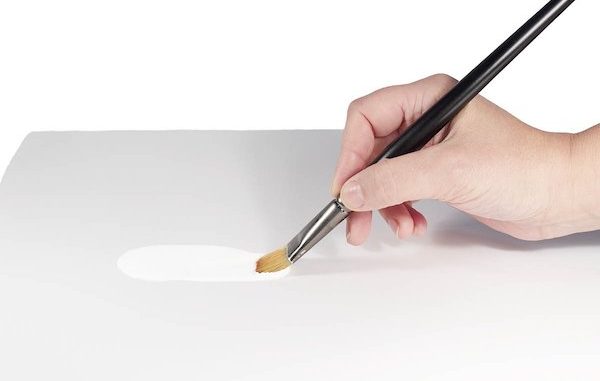


Image via Culture Hustle
Stuart Semple, who in defiance of fellow British artist Anish Kapoor claiming rights to the infamous Vantablack, developed “open-source” blackest blacks that anyone in the world (except Kapoor) could purchase and use. This was followed by the creation of the pinkest pink pigment, the yellowest yellow, the greenest green, and even an infringement-proof ‘Tiff Blue’.
It’s almost natural that Semple would devise a formula for the “whitest white paint,” the yang to his BLACK paint’s yin. And it’s finally here. ‘WHITE 2.0’ is an acrylic paint consisting of high-quality pigments, optical brighteners, and mattifiers to be able to evenly reflect 99.98% light, more than the 98.1% capacity of Purdue University’s “whitest white” paint designed to cool down buildings.

Image via Culture Hustle
For comparison, WHITE 2.0 is said to be 50% brighter than the market’s best-selling white paint. At $28 per 150ml bottle, it’s also relatively affordable: “Although super-whites are available, they are expensive, and not available to everyday makers like us,” says Semple.
To onlookers, the whitest white paint from the maker of the blackest black paint you can buy must have been a long time coming. However, the paint was actually in the works for years. 2.0 builds upon three prototype versions that Semple developed with scientists, and then delivered to 2,000 artists during the lockdown. After gathering feedback, the team went back to the drawing board to create a hybrid paint of all the features the artists wanted from the brightest white paint in existence—a process that “took a further couple of years,” Semple tells Dezeen.
One gripe creators have about existing white paints is that you’d often have to pile on the layers before achieving the desired look. The finalized WHITE 2.0 doesn’t have that problem; the ultra-opaque paint is devised with an instant recoat technology that eliminates the need to keep brushing over an object, even with trickier surfaces.
Speaking of brushes, WHITE 2.0 can be used a couple of ways: You could use it with a paintbrush or spray it onto a surface. Common materials to apply it on include paper, wood, metal, and glass.
Semple tells Dezeen that the paint is the product of observing luminescence in nature, such as the sheen of the ghost beetle and plants. Apart from flora and fauna, his team also looked to the early barium paints used by master painters like Caravaggio.
“It really is the brightest white paint I’ve ever seen, and I couldn’t believe it when the lab results came back to say it was 50% brighter than any other,” he says.

Leave a Reply